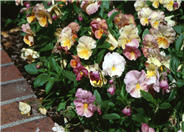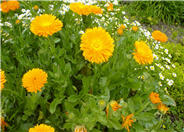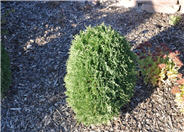
Common name:Pansy
Botanical name:Viola
Okay, so you might not think of pansies as a low-water plant, but given that they are typically planted in the fall or early spring, they manage on very little supplemental watering, at least until summer. So, used in those seasons, they may be well suited to a water-wise garden. They come in too many colors and combinations to mention. They are all relatively low-growing, and bloom when its cool. A wonderful companion to flowering cabbage and kale. Just don't put them out in the sun in the hot summer months and expect them to thrive.

Common name:Calendula, Pot Marigold, Poor-man's
Botanical name:Calendula officinalis
Regardless of which name is used, calendula is a wonderful addition to an herb or vegetable garden. Flowers are densely petaled in warm tones, typically soft yellow to bold orange, depending on the variety. Leaves are deep green and smooth to gently lobed. Flower petals are edible, and add a bright spot to salads, or when cooked with rice, impart a golden tint and earthy scent. Flowers mid spring to early summer, and sometimes again in the fall.

Common name:Hetz Midget Arborvitae
Botanical name:Thuja occidentalis 'Hetz Midget'
Although the species is a native American coniferous evergreen tree which grows 40 to 60 feet tall, 'Hetz Midget' is a slow-growing, globe-shaped, dwarf cultivar that typically matures to only 3 to 4 feet tall and 4 to 5 feet wide. Blue-green foliage is scale-like and appears in flat, fan-shaped clusters. Use in beds and borders to add interest for the winter months, particularly under snow, when all else is bare. Adapts beautifully to wild and rock gardens, and is a problem solver for formal gardens in our dry climate where boxwood and other conifers suffer. Makes a fine container foliage plant for porch, patio and terrace.
| Designer: | Red Flagstone |
Photographer: GardenSoft |
Water Saving Tip:
Apply a layer of mulch around plants to reduce moisture loss.
Choose organic mulches, such as shredded bark, compost or aged sawdust.
